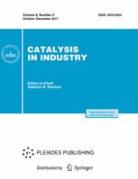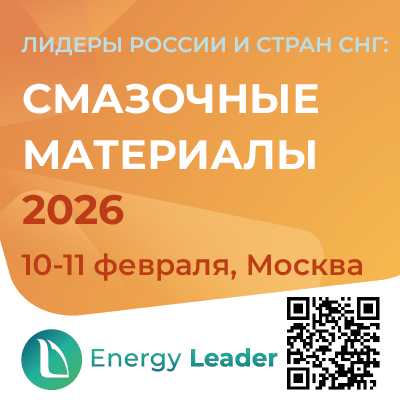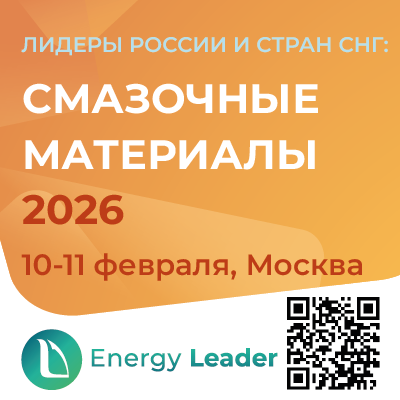The effect of a nickel-containing catalyst on the tar carbonization process
https://doi.org/10.18412/1816-0387-2021-1-2-7-14
Abstract
Tar carbonization was studied in the absence or presence of the 7% Ni/CNT catalyst. It was shown that tar carbonization at a temperature of 350 °С without the catalyst leads to the formation of gaseous and liquid products and oil coke. Thermolysis products are formed via the separation of lateral hydrocarbon chains from the initial polyaromatic hydrocarbons. Gaseous products consist of С1-С6 hydrocarbons and sulfur-containing gases H2S and COS. Fractional composition of the liquid thermolysis products was studied. It was found that 50 % of the liquid products are represented by gasoline and diesel fractions. The 7% Ni/CNT catalyst was prepared by impregnation. The effect of this catalyst on the tar carbonization in the temperature range of 300–550 °С was studied. The addition of the 7% Ni/CNT catalyst to tar increased its yield and decreased the sulfur content due to partial conversion of sulfur to hydrogen sulfide and COS, which are removed with the gas phase. The electron microscopy study showed that the oil coke obtained upon catalytic tar carbonization is reinforced with carbon nanotubes.
About the Authors
V. V. ChesnokovRussian Federation
A. S. Chichkan
Russian Federation
V. N. Parmon
Russian Federation
References
1. Капустин В.М., Гуреев А.А. Технология переработки нефти. Ч. 2. Деструктивные процессы. М.: КолосС, 2008. 334 с.
2. Походенко Н.Т., Брондз Б.И. Получение и обработка нефтяного кокса. М.: Химия, 1986. 312 с.
3. Игонин П.Г. // Химия и технология топлива и масел. 1957. № 6. С. 66—68.
4. Kelemen S.R., Siskin M., Gorbaty M.L., Ferrughelli D.T., Kwiatek P.J., Brown L.D., Eppig C.P., Kennedy R.J. // Energy Fuels. 2007. V. 21. № 2. P. 927—940.
5. Чесноков В.В., Буянов Р.А. // Успехи химии. 2000. Т. 69. № 7. С. 675—692.
6. Буянов Р.А., Чесноков В.В. // Катализ в промышленности. 2006. № 2. С. 3—15.
7. Чесноков В.В., Чичкань А.С., Пармон В.Н. // Катализ в промышленности. 2018. Т. 18. № 1. С. 67—73.
8. Кондрашева Н.К., Рудко В.А., Назаренко М.Ю. // Кокс и химия. 2018. № 12. С. 26—31.
9. Дьячков П.Н. Углеродные нанотрубки: строение, свойства, применение. М.: БИНОМ, лаборатория знаний, 2006. 293 с.
10. Чесноков В.В., Буянов Р.А., Чичкань А.С. // Кинетика и катализ. 2010. Т. 51. № 5. С. 803—808.
11. Franklin R.E. // Acta Cryst. 1951. V. 4. P. 253—261.
12. Maire J., Méring J. Graphitization of Soft Carbons. In: Chemistry and Physics of Carbon, V. 6. New York: Marcel Dekker, 1970. P. 125—189.
13. Чесноков В.В., Чичкань А.С., Паукштис Е.А., Чесалов Ю.А., Краснов А.В. // Кинетика и катализ. 2019. Т. 60. № 4. С. 471—478.
14. Чесноков В.В., Чичкань А.С., Паукштис Е.А. // Нефтехимия. 2019. Т. 59. № 2. С. 178—183.
15. Чесноков В.В., Чичкань А.С., Пармон В.Н. // Доклады Академии наук. 2019. Т. 484. № 4. С. 451—454.
Review
For citations:
Chesnokov V.V., Chichkan A.S., Parmon V.N. The effect of a nickel-containing catalyst on the tar carbonization process. Kataliz v promyshlennosti. 2021;1(1-2):7-14. (In Russ.) https://doi.org/10.18412/1816-0387-2021-1-2-7-14



























